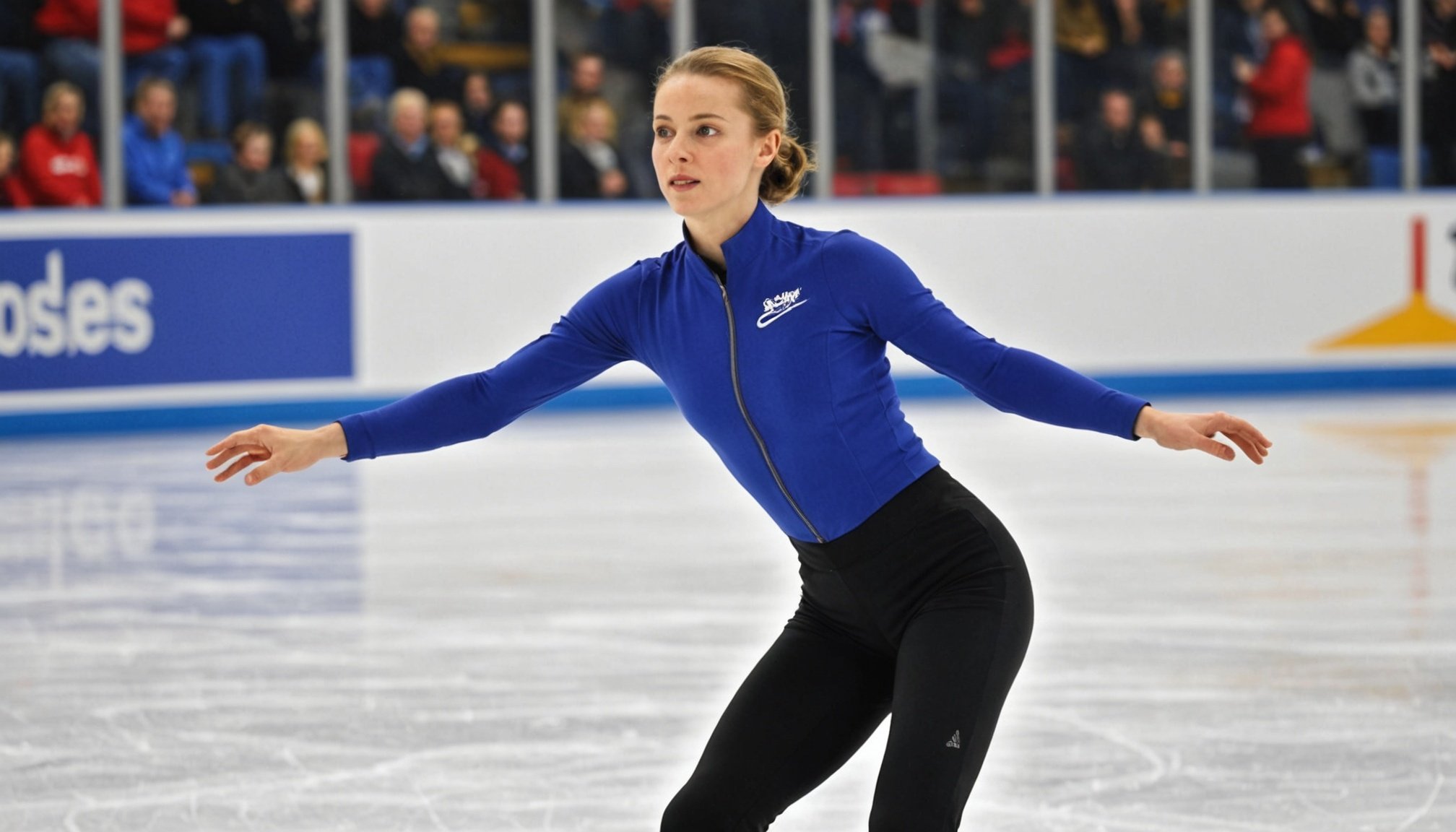Strategies for Enhancing Balance in Figure Skating
Understanding balance improvement techniques is fundamental for figure skaters aiming to excel on the ice. One major aspect involves fortifying core stability. A strong core acts as a foundation, enabling skaters to execute movements smoothly and maintain control during complex routines. Core stability can be enhanced through focused exercises such as planks and Russian twists, which engage the abdominal and lower back muscles.
Specific exercises are crucial in cultivating balance while skating. Single-leg squats and balance drills on the ice allow skaters to perfect their equilibrium. These exercises challenge stability and mimic the dynamic conditions experienced during performances. For beginners, starting with basic balance drills and gradually advancing to more intricate routines provides a sustainable pathway to improvement.
Also to see : Vital Safety Protocols Every UK Motorsport Racing Circuit Must Implement
Moreover, integrating practices like yoga and Pilates can significantly boost poise. These disciplines emphasize controlled movements and breathing, which are beneficial in maintaining balance. Yoga poses such as the tree pose enhance focus and steadiness, while Pilates routines strengthen the entire musculoskeletal system, refining skating posture and stability.
Incorporating a mix of these balance improvement techniques is essential for skaters at all levels. By dedicating time to these exercises, skaters not only improve their balance but also enhance their overall performance and confidence on the ice.
Also to discover : Crafting the Perfect Sponsorship Pitch: Essential Elements for UK Minor League Football Teams
Mental Techniques for Maintaining Poise Under Pressure
In the competitive world of skating, maintaining psychological resilience is crucial. Skaters can employ visualization exercises to enhance their performance. Imagine executing each move with precision; this not only boosts confidence but also prepares the mind for anticipated challenges. Consistently incorporating visualization into training can transform a skater’s mindset, making high-pressure scenarios feel familiar and manageable.
Breathing techniques play a vital role in managing performance anxiety. Simple practices like controlled, deep breaths help slow the heart rate, fostering a sense of calm and reducing physiological responses to stress. Skaters can find a personal rhythm by breathing in for four counts, holding for four, and exhaling for four. This method, often referred to as “box breathing,” can anchor skaters during high-stress performances and maintain focus.
Moreover, mindfulness practices are invaluable for enhancing concentration. Techniques such as body scans, where skaters observe physical sensations without judgment, help in bringing attention back to the present moment. Skaters can also employ mindful meditation before routines, centring their thoughts and energies on the task ahead. This clarity not only sharpens focus but also enriches the overall performance experience. Cultivating these mental techniques cultivates a profound resilience that ensures skaters remain poised even under the most intense pressure.
Training Routines Tailored for UK Figure Skaters
A well-rounded training regimen is vital for figure skaters aiming to perform at their best on the ice. Training regimens must encompass diverse elements to build strength, flexibility, and endurance.
Off-Ice Conditioning
Off-ice conditioning plays a significant role in developing the physical capabilities necessary for figure skating. Engaging in exercises like plyometrics, core strengthening, and cardiovascular workouts can increase both endurance and power. Incorporating flexibility training, such as yoga or Pilates, helps skaters maintain and improve their range of motion, which is essential for executing complex maneuvers on the ice.
On-Ice Drills
Effective on-ice drills are crucial for improving technique, speed, and precision. Skaters should focus on drills that enhance edgework, spins, and jump landings. Practicing choreographed routines regularly aids in harmonizing movements and boosts performance confidence.
Warm-up and Cool-down Practices
Implementing an optimal warm-up routine is vital to prepare the body for high-pressure performances. A good warm-up increases blood flow to muscles, reducing injury risks. It often includes light jogging, dynamic stretches, and sport-specific drills. After sessions, a structured cool-down helps in muscular recovery and prevents stiffness. This typically involves slow-paced skating and static stretching.
A comprehensive training cycle, encompassing these elements, ensures that skaters are physically and mentally prepared, optimizing their performance and reducing injury risk.
Incorporating Expert Insights and Testimonials
Venturing into the world of figure skating often requires guidance from experienced individuals. Expert advice holds immense value, whether from renowned UK figure skating coaches or successful former skaters. Their insights can be a game-changer for those eager to excel.
Interviews with UK coaches often shed light on nuanced strategies that might go unnoticed by beginners. These coaches share their wealth of experience, highlighting techniques that can enhance both performance and confidence on the ice. Such expert advice emphasizes not just the technical skills but also the mental fortitude essential for competitive success.
Moreover, testimonials from competitive skaters provide real-world examples of overcoming challenges and embracing innovative strategies. Their stories often include personalized adjustments and unexpected hurdles, giving aspiring skaters relatable scenarios. Hearing firsthand accounts of how they navigated their journeys can inspire and motivate new athletes.
The importance of mentorship cannot be overstated. Learning from experienced athletes offers a broad perspective on what it takes to succeed. Guidance from those who have “been there” provides a sense of direction and reassurance, making the daunting path towards excellence appear more navigable. Ultimately, having access to wise counsel can be the difference between mediocrity and mastery in figure skating.
Utilizing Visual Aids and Demonstrations
Visual aids are essential in enhancing comprehension and performance in various fields. Particularly, the use of demonstrational techniques has proven invaluable. For instance, video analysis plays a significant role by providing instantaneous feedback. This feedback helps in identifying and correcting errors with precision, thereby enhancing overall performance.
Another effective approach is the incorporation of diagrams, particularly for detailing complex movements. Visual representations simplify intricate motions, making them easier to understand and replicate. Diagrams can be complemented with video demonstrations, which provide a dynamic perspective on movement sequences. By combining diagrams with video, learners can see both the theoretical and practical aspects of each movement.
Lastly, the potential for video demonstrations to cover specific exercises and routines is immense. They enable instructors to break down exercises into manageable components, offering step-by-step guidance. This method allows learners to focus on mastering each part of a routine before combining them into a full sequence. The accessibility and repeatability of video demonstrations provide learners the opportunity to revisit and reinforce their skills continuously.











